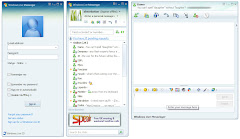To begin with the history of the Colony of Asunción we have to mention the discovery of the Rio de La Plata by Juan Díaz de Solís, which took place in 1515. It was not up to 1524 that Paraguay was discovered, when Alejo García, coming from Brazil, arrived. For eight years Alejo Garcia mustered men and began a trip to the interior of Paraguay. He marched west and discovered Iguazu Falls crossed the Rio Parana, and arrived at Asuncion, thirteen years before it was founded. Another important fact occurred in 1537, when the expedition of Gonzalo de Mendoza and Juan de Salazar, trying to find a route to the famous goldfields in Perú, resulted in the foundation of the fort Our Lady of Asunción.

Asunción began to stand as a commercial and administrative centre at the very beginning of this settlement. It had been given the character of “mother city,” because from Asunción commercial expeditions left and found numerous towns and cities in the region, such as Santa Fe and Buenos Aires. Little by little, The city became the centre from which La Plata section of South America was administered.
A very important landmark in Paraguay and in Asunción as well was the Jesuit Missions which spred the gospel among the natives. They began in 1604 and finished with the expulsion of the Jesuits from Asunción in 1767. There were many things that the Jesuits did in the “reducciones”. One of them was to pay attention to the different languages which existed among the aboriginal inhabitants and composed kinds of diccionaries to get a better understanding of those languages. Another thing was to settle natives down into colonies to achieve a better organization and to carry the Christian faith to the tribes. Each reduction was organized as a miniature republic with its own governors, who were elected among the aboriginal inhabitants themselves. The reducciones were built by the Guarani. The indigenous created the altars, sculptures, and much of the art that can be seen the churches and museums of Paraguay. Nowadays, we may observe the Jesuits´work, as regards knowledge, technology, art, social organization, politics and religion, in the ruins in some places in the southern part of Paraguay.

When the flourishing early days of Asunción passed, its began to be less and less important as a commercial centre, though remaining important as an administrative one. Buenos Aires became more relevant than Asunción as regard commercial matters.
To finish, we have to mention that Paraguay proclaimed its independence of Spain on May 14, 1811.



1 comment:
Hello Martin. It's a very neat article. It is interesting to observe that both historical events; the discovery of the Rio de la Plata and Paraguay were relatively closer to the discovery of America in 1492, I mean, just a quarter of a century time between each other. As for the route of the gold to Peru mentioned in this article, probably, the recent discovery of an ancient ship in the Rio de La Plata might have some connection with all this. If Iam not mistaken,'National Geographic' channel broadcasted something on TV in these days about the discovery of this ship in the river. What I cannot precise exactly is if this recent discovery is related to the old to the historical events mentioned in this article, or if it's related to those war galeons sealing during 1800 onwards. Congrats for the article.
Post a Comment